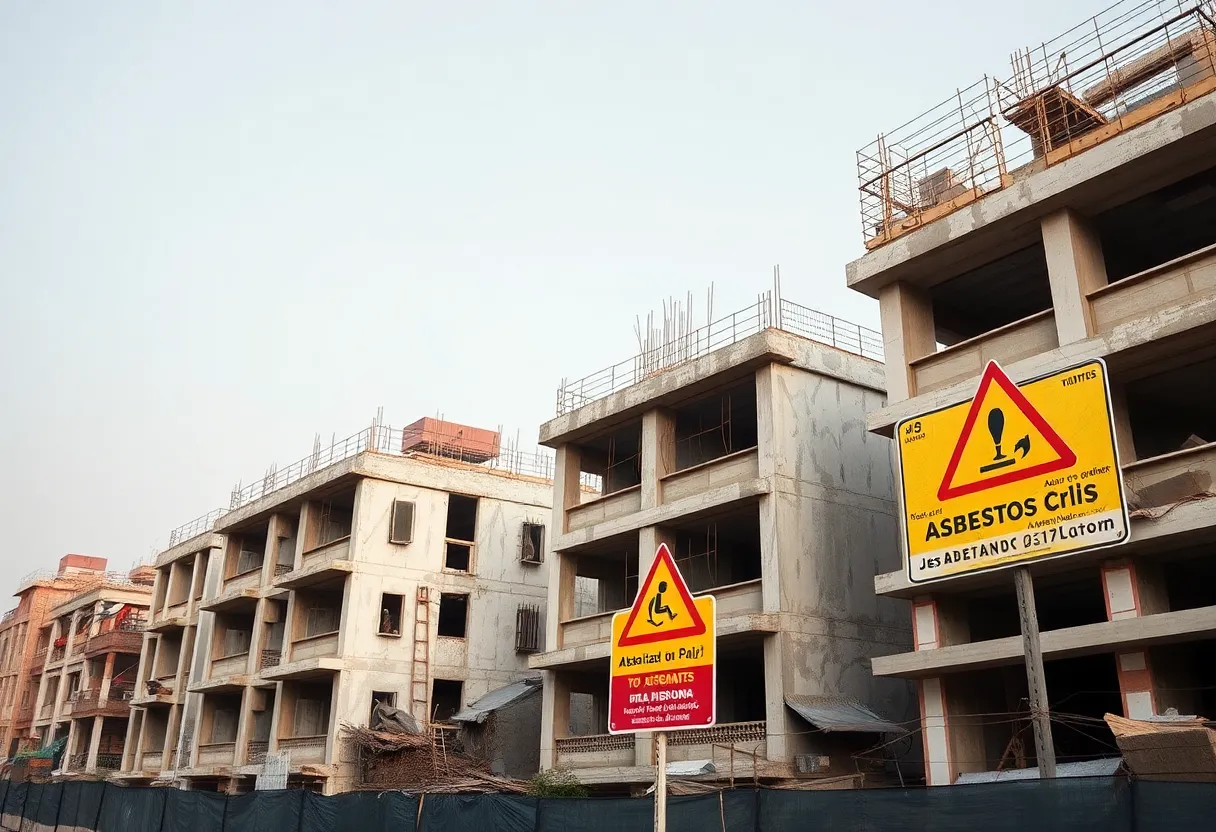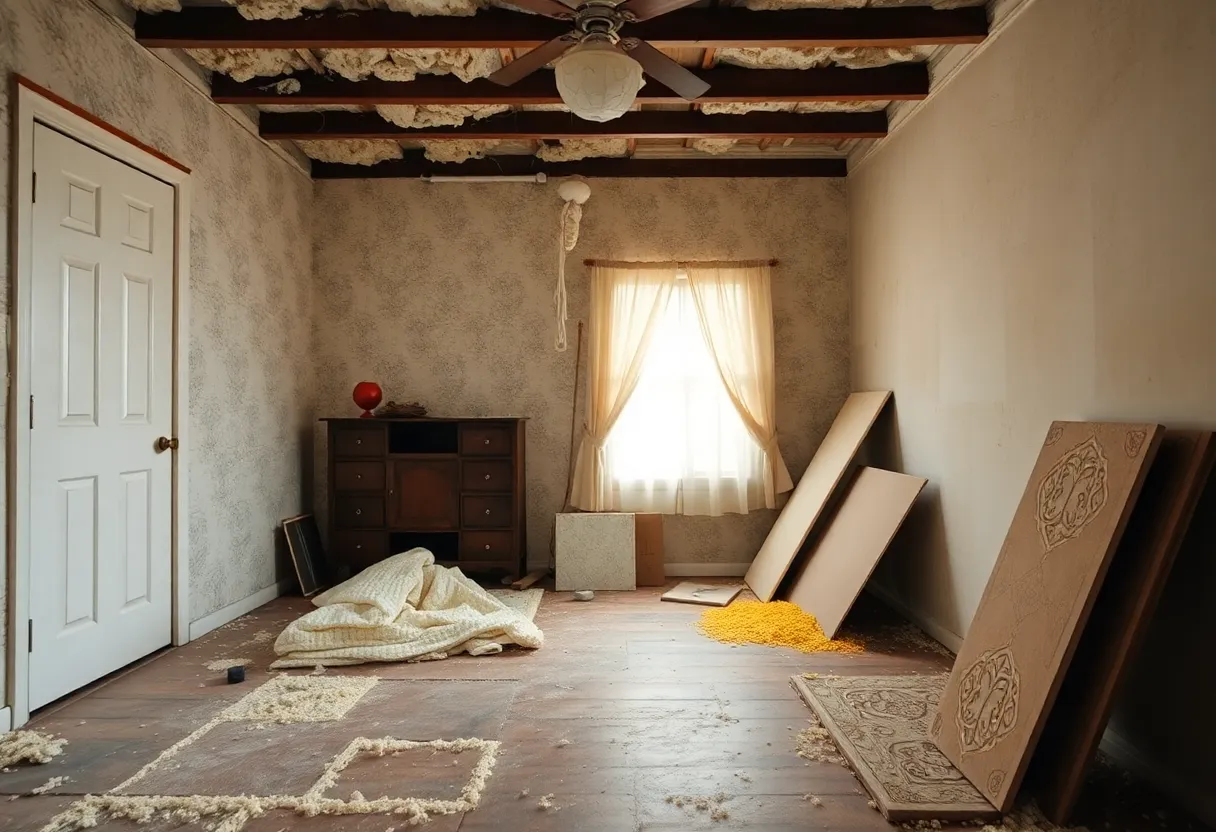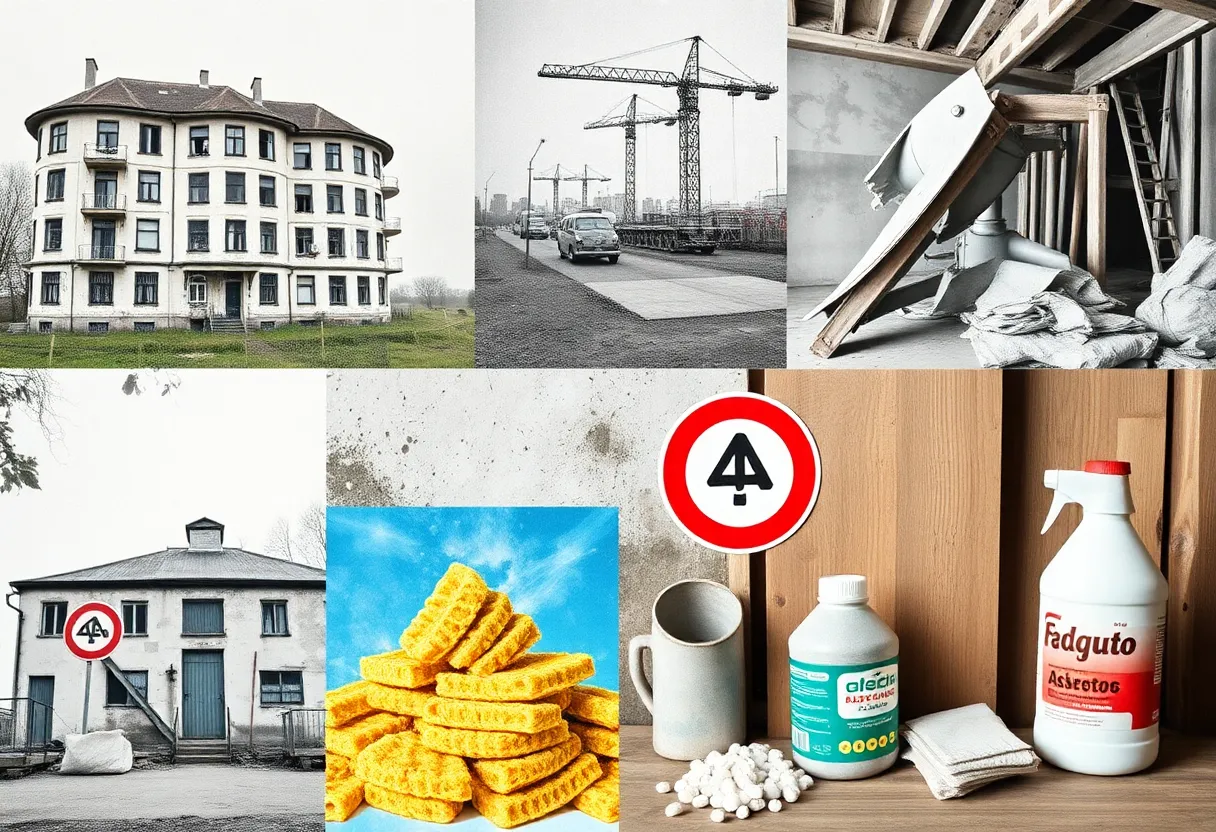News Summary
Pakistan faces a growing asbestos crisis, jeopardizing public health as the dangerous substance continues to be used despite its lethal effects.
The Asbestos Crisis: A Silent Killer in Pakistan
As asbestos continues to be manufactured, sold, and installed in Pakistan, the country finds itself embroiled in a public health crisis that threatens the lives of countless individuals. Despite being banned in over 60 countries due to its lethal effects, the perilous material thrives here, especially in urban slums, industrial zones, and aging public buildings.
An All-Too-Common Poison
Once celebrated for its remarkable strength, affordability, and resistance to heat and corrosion, asbestos is now recognized as a dangerous carcinogen. The microscopic fibers of asbestos become airborne when disturbed, ultimately entering the lungs and lodging there for decades. This exposure can lead to a range of grave health issues, including mesothelioma, asbestosis, and chronic respiratory conditions.
The Long Wait for Symptoms
An alarming aspect of asbestos exposure is the long latency period before symptoms manifest, often taking between 20 to 40 years. This delay complicates early diagnosis and treatment, leaving many victims in a prolonged state of suffering and despair. Those residing in bustling cities like Karachi, Lahore, Faisalabad, and Quetta frequently report unexplained respiratory issues associated with asbestos exposure.
At-Risk Communities in Danger
The plight of vulnerable communities is exacerbated in regions like Gilgit-Baltistan and parts of Khyber Pakhtunkhwa, which have naturally occurring asbestos deposits. Here, both adults and children are at risk, frequently unaware of the hazardous materials around them. Additionally, laborers working in sectors such as shipbreaking or auto repair regularly handle asbestos-containing materials without adequate protection, and as a result, they inadvertently expose their families to the hidden dangers of this toxic substance.
A Lack of Awareness and Institutional Failure
Public ignorance surrounding asbestos remains widespread in Pakistan. The perception of this dangerous substance as a feasible construction material continues to linger, with contractors often promoting it for its durability and low cost. Both healthcare facilities and public buildings constructed with asbestos materials pose ongoing health threats to patients and communities alike.
Despite being a signatory to the Rotterdam Convention, Pakistan has yet to enact a national ban on asbestos, highlighting a glaring institutional failure. The absence of tracking and registry systems for asbestos use, combined with a lack of monitoring for related diseases, further deepens the crisis. As asbestos-related risks escalate, imports of asbestos products and manufacturing of asbestos-based materials continue unabated.
Proposed Solutions to Combat Asbestos
Amidst the growing threat, several proposals aim to address the ongoing asbestos crisis in Pakistan. These include:
- A complete ban on the import, manufacture, and use of asbestos.
- Conducting a national survey to identify buildings containing asbestos, focusing particularly on public sector facilities.
- Developing a robust plan for the safe removal and disposal of asbestos materials.
- Establishing routine health screenings for individuals residing in high-risk areas.
- Training medical staff to accurately recognize asbestos-related illnesses.
- Mandating the use of personal protective equipment (PPE) for workers in at-risk industries.
- Implementing comprehensive health insurance schemes for vulnerable workers.
- Launching extensive public awareness campaigns to educate citizens about the dangers of asbestos and explore safer alternatives.
- Funding research initiatives and creating national registries for asbestos-related ailments.
Shaping the Future of Urban Development
To prevent future tragedies linked to asbestos use, urban development efforts in Pakistan must prioritize public health. It is crucial to foster a collective understanding among civil society, media, and decision-makers regarding the risks associated with asbestos, as well as to advocate for safer construction practices.
The ongoing fight against asbestos is not just a matter of individual health; it is a call to action for society as a whole. Ensuring safety in construction is paramount to protect lives now and in the future.
Deeper Dive: News & Info About This Topic
HERE Resources
The Silent Threat: Mesothelioma and Its Deadly Impact on U.S. Veterans
Cleanup of Former Columbian Enameling Site Reaches Major Milestone
Closure of Asbestos Clinic in Libby, Montana Sparks Health Concerns
Judicial Ruling Shapes Future of Asbestos Liabilities in Bankruptcy
Asbestos Warning Signs Emerge as Demolition Projects Unfold in New Orleans
Asbestos Threat Neutralized at Trumbull Center
Trumbull Center Asbestos Scare Declared Non-Hazardous
Health Risks Loom in St. Louis Following Tornado Damages
Mesothelioma Diagnosis Sparks Alarm Over Asbestos Exposure at Former Data Center
New Laws May Threaten Mesothelioma Payouts: A Closer Look
Additional Resources
- The Friday Times: Urgent Need to Ban Asbestos in Pakistan
- Wikipedia: Asbestos
- The Diplomat: Singapore’s Toxic Past
- Google Search: Asbestos Health Effects
- Live Mint: FDA Proposes New Testing Rules for Asbestos
- Google Scholar: Asbestos Exposure
- Surviving Mesothelioma: Pakistan May Ban Asbestos
- Encyclopedia Britannica: Asbestos



















